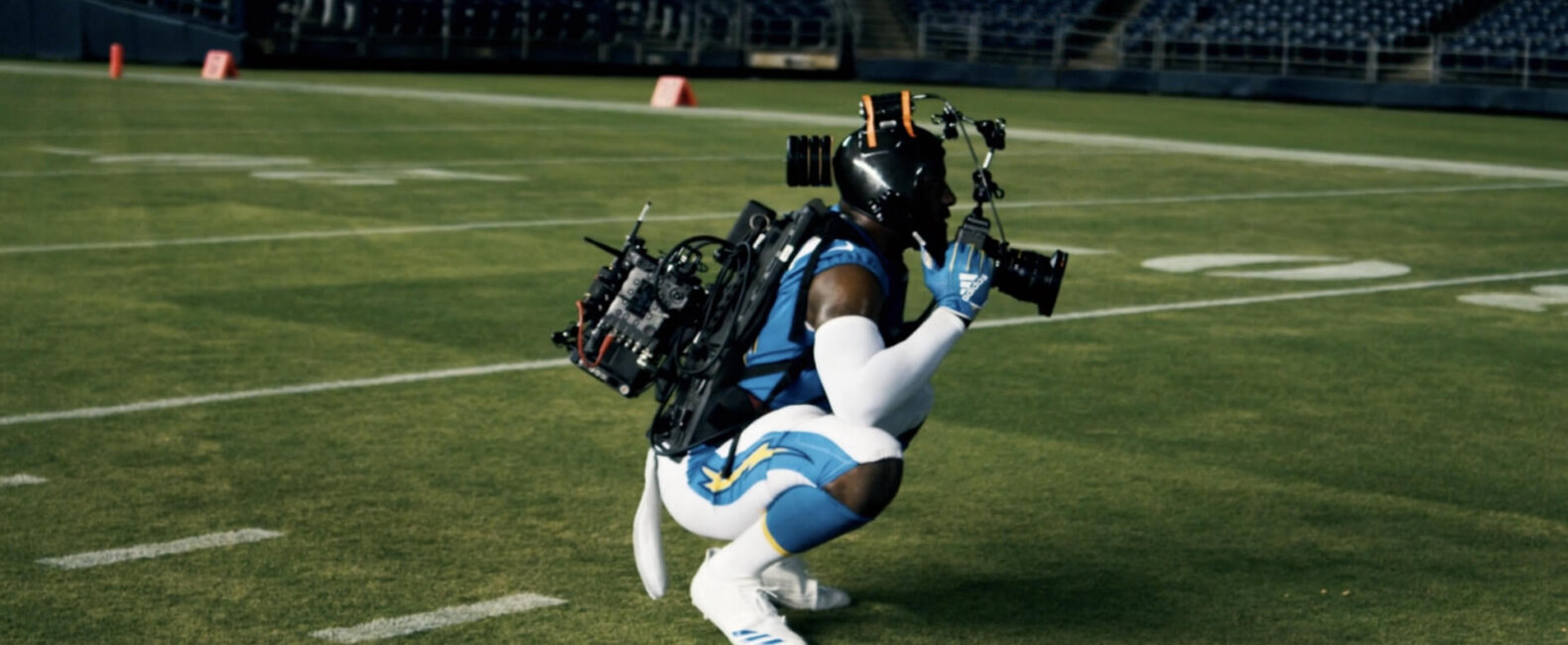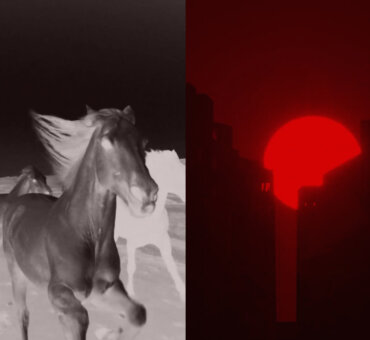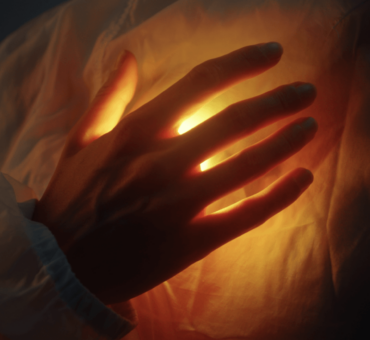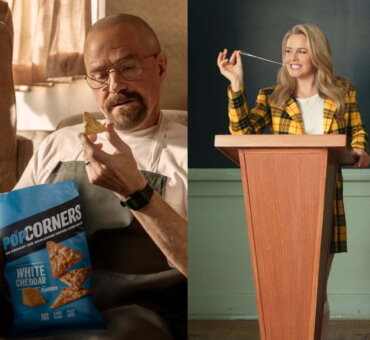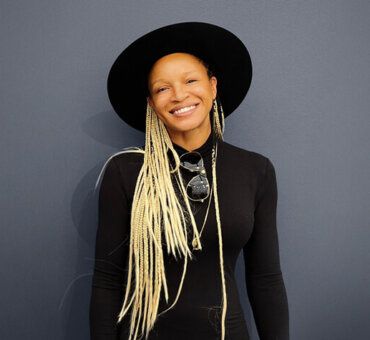Our latest entry into Behind the Work gives you a peek behind the curtain, into the trick behind the magic. The magicians in this case are the team at Stept Studios, who put together Oakley’s first campaign after being named an official sponsor of the NFL. It was a big deal, with big challenges. Stept Co-Founder Nick Martini runs through the laundry list of obstacles:
“There are creative hurdles of getting this big idea developed, fleshed out, and approved through all of the different brand layers, but then coordinating with celebrity athletes who are all in different places of the country, getting the physical production done, and then a spot that really relies on so much CG and visual effects. Trying to figure out how to execute that work in an unusually condensed timeline, was a huge challenge,” he told us.
But, as is the case with all great studios, they came up with equally huge solutions. In our conversation with Nick, along with Stept Head of Creative Adam Rachlitz and DP Brandon Kelly, we talked about the innovative techniques behind the camera rig, the creative and logistical choices behind the first-person point of view, and the joys of making “crazy shit” with the team at Oakley.
Filmsupply: What did the brief look like for this campaign?
Nick Martini: Oakley came to Stept with a really exciting brief. They hadn’t announced it yet, but they had signed on to become one of the very few official partners of the NFL. It turns out there are very few brands who are actually an official sponsor of the NFL and, at the time, from what we understood is that it was Oakley’s biggest athletic partnership to date. That is a huge investment for the brand. They wanted to create some content to announce the partnership, really make a splash, and do something special.
Adam Rachlitz: This was definitely like, ‘Hey, we need a really big campaign that’s going to get a lot of attention and really establish Oakley as a big competitor, not just in the glasses world but in the sportswear world.’ So, it was a big brief, both for Oakley and our clients at Oakley who wanted to do something really impactful, and also for us as an opportunity to make a big campaign.
Nick: They came to us with the hope of telling the story of how the eyewear would impact these players on the field, elevate their game, and “see the game differently,” which ultimately became the slogan. A couple of years ago, there was such a flood of POV content via the GoPro phenomenon, that it seemed like an interesting opportunity to take something that, in theory, had been beaten to death and figure out how to elevate it significantly.
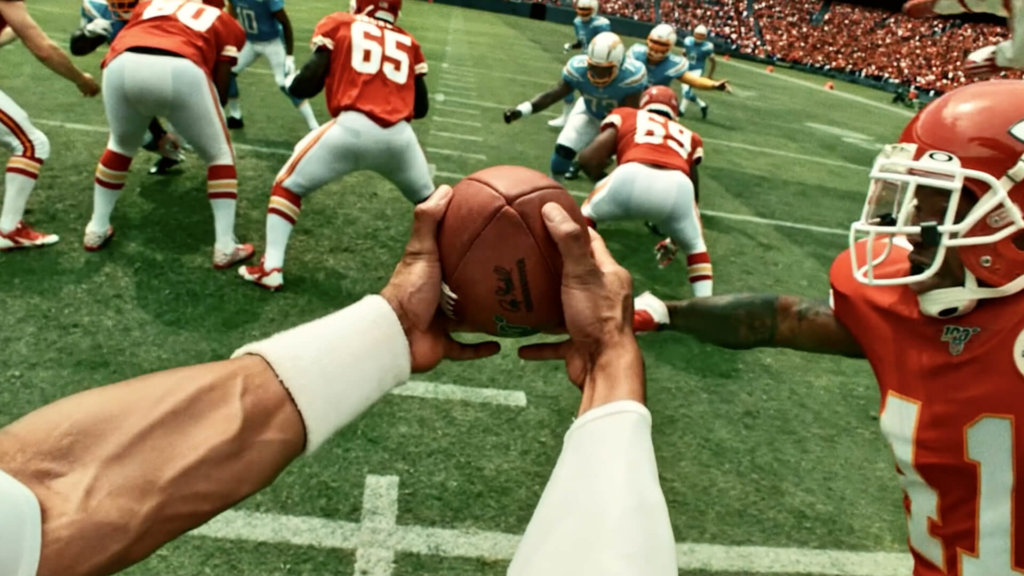
Elevate it how?
Nick: I remember the first call we had with our director, Leigh Powis, he said, “How would we do the IMAX of POV?” He starts dreaming up shit that none of us had thought about. “We have to go through the helmet. We’re going to do it in this way with this type of CGI. Here’s what I want it to look like and here’s the perspectives and lensing.” And he brings this really aggressive enthusiasm to the equation that pushes everybody on the team to band together and come up with innovative solutions.
Luckily, Leigh brought in his longest-time collaborator, Brandon, who has shot the majority of Lee’s commercial work over the years. Brandon has a very similar DNA, wanting to push it and make things super special. He was behind a lot of the specialty rigs. He was behind pushing to use the Rialto, shooting on a large-format camera instead of some other solutions we proposed.
Brandon Kelly: With every shoot, like so many commercials these days, clients want crazy camera moves, crazy transitions. I don’t find them as obstacles a lot of the time; it’s part of the job and something I enjoy figuring out how to do and really diving in and figuring out what’s going to be the best approach for every shot, how to accomplish something.
But, it can be tricky on commercials because a lot of the time you don’t necessarily get time to test everything. You’ve got to go with your gut instinct and say, “This is how we’re going to get the shot.” I don’t want to make any sacrifices with anything, where it has to be, “Well, this shot is too hard and let’s just make it easier.” We want to build and accomplish the creative. I think that’s the most important thing for me as a DP, is creating what’s there and making it work and getting the best shot we can.
Adam: They paid a lot of money to be able to show these jerseys, so we wanted to create a game-like scenario. Because it was in the off-season and you couldn’t fill a stadium with people, we basically had to build CG stadiums. It wasn’t like a massive budget, despite the task. Every second is money.
Not to mention, the logistics of working with an entity like the NFL.
Nick: Yeah. There are creative hurdles of getting this big idea developed and fleshed out, as well as approved through all of the different brand layers, but then coordinating with celebrity athletes who are all in different places of the country, getting the physical production done, and then a spot that really relies on so much CG and visual effects. Trying to figure out a way to execute that work in an unusually condensed timeline, was a huge challenge. That’s when our production and post department, luckily being under one roof, could really collaborate and start to figure out as assets came back from the field, what could go in based on the pre-vis to production to initial CGI.
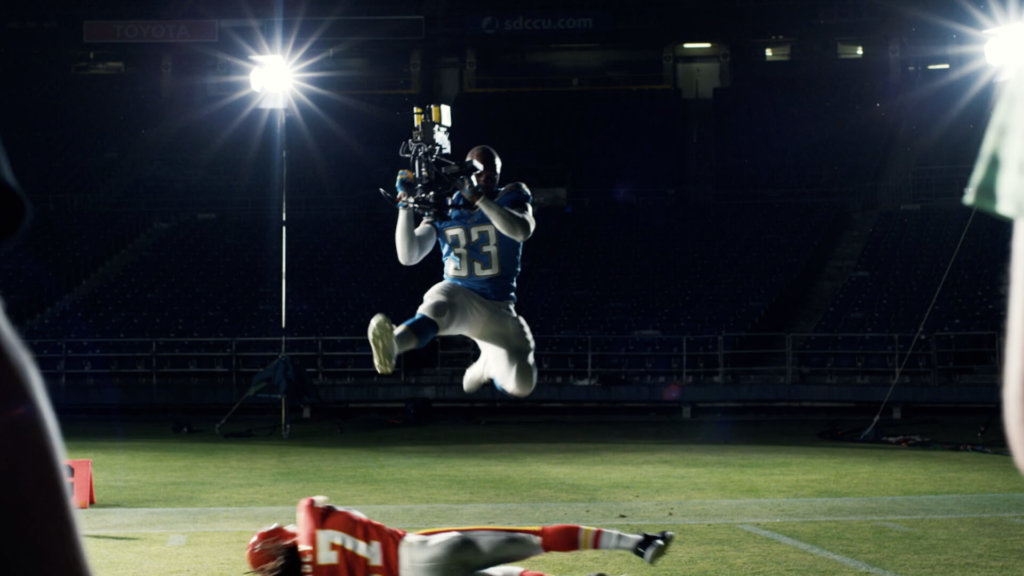
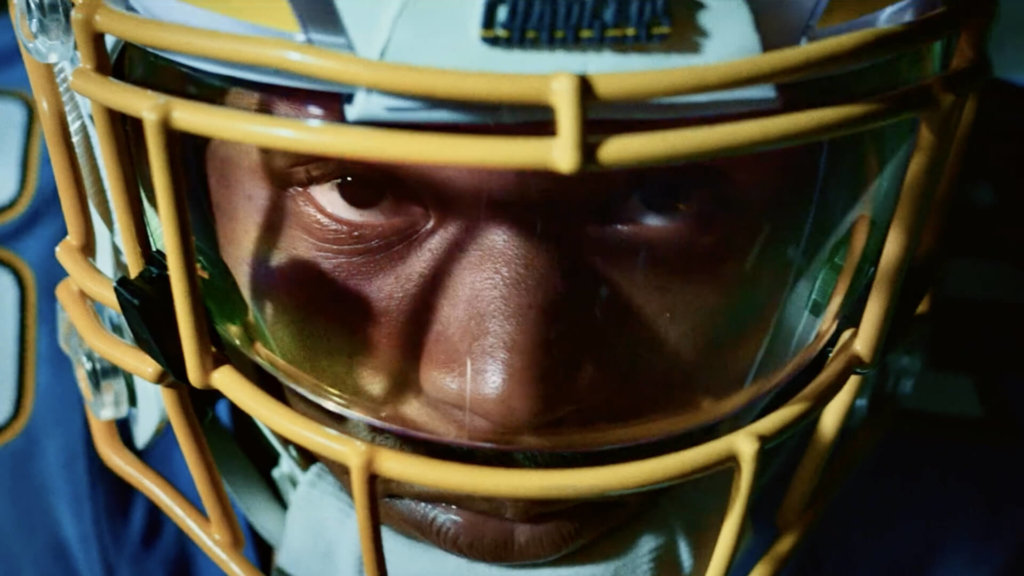
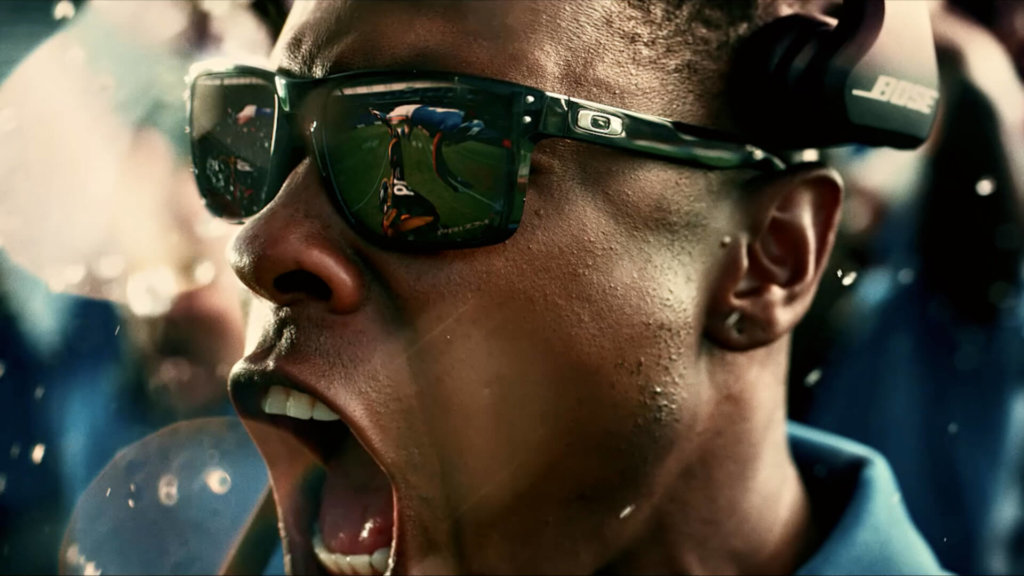
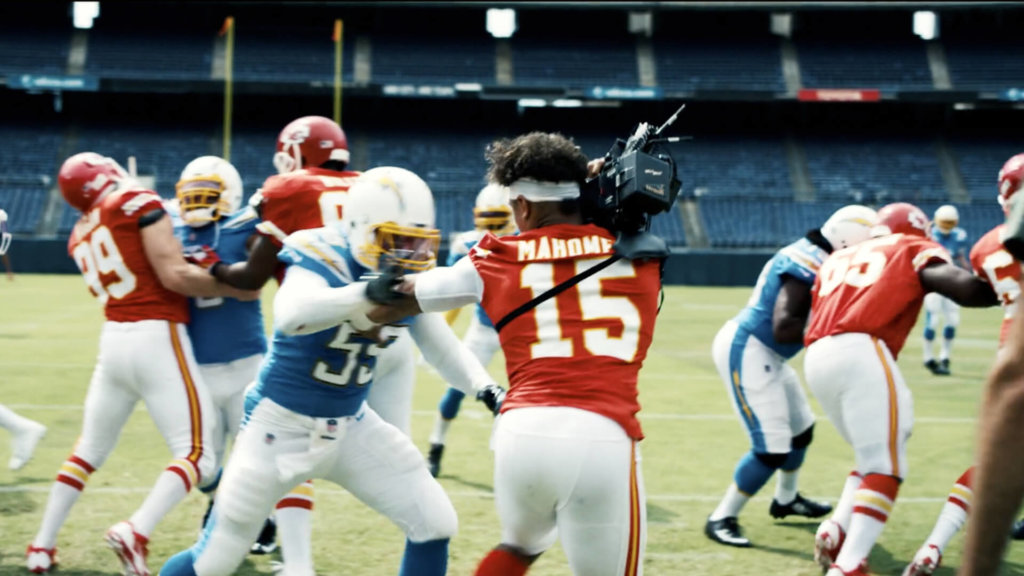
How did you build out the camera rig?
We were using a lot of technology we’ve never used before. The Sony Venice, at the time, had just come out with the Rialto, which can be detached from the camera and function as an isolated lens mount. It creates an ultra-light camera head, which is then tethered to a full-sized camera body that the operator would traditionally wear on his or her back.
The Rialto is unique because it has a large-format sensor in a camera that is a fraction of the size of a traditional cinema camera. We were able to build some custom helmet rigs that went on football helmets to get the Rialto right in a perfect POV perspective. We put nice cinema glass on it, and then have the football players wear a camera system on their back. At the time, not a lot of people had really done this or experimented with it. We had no playbook to follow, so we were really pioneering this POV technique.
Was there a football reference on-set?
Adam: We had to plan out every shot to the second, so we were able to spend the money smartly. Me, Lee, and Brandon, actually had a sports choreographer come into the studio. I remember I had a phone taped to my forehead to imitate the POV [laughs]. The choreographer was writing plays for us and then we would play them out while filming with the phone. We did a quick stitch for the pre-vis and that helped us come in with a really dialed plan, not only from a camera and timing point of view, but also for the plays with the athletes. We had every single one of those movements planned—it was definitely a choreographed dance.
How did you coordinate those schedules with athletes?
Nick: When you’re working with celebrity athletes like Patrick Mahomes, MVP of the NFL that year, you have such limited time and you’re working within their world. The day we shot Mahomes for this piece, he had two or three other productions that day. We had two hours in the morning, then it was Pizza Hut, and then it was like some bank. We come in, we get them for an hour or two and we have to do our work very efficiently. The creative team here was pretty genius in that you only see these athletes’ faces for a couple moments. Then, you’re in a POV. Because of that, our shotlist that featured the talent themselves was pretty concise.
Adam: We knew that if we went into their point of view, we can have actors—real athletes, just not NFL athletes—stand in for them and get the shot with the pro athletes, with Mahomes, and then fill out a full spot where we only have a half-hour with the guy. There were some things that took a lot of takes where we were sweating about the timing. There’s this slow-mo shot of a player flipping over your head and it’s shot with the Phantom and there’s water spraying. And, Lee made us do that so many times. We were thinking, “We might mess up this whole thing if we don’t move on, Lee.” [Laughs] But I also love that about him. He won’t stop until he gets that perfect shot.
For an announcement campaign, it’s an ambitious spot. Did it take a lot of convincing on Oakley’s part?
Nick: When you’re working with celebrity athletes like Patrick Mahomes, MVP of the NFL that year, you have such limited time and you’re working within their world. The day we shot Mahomes for this piece, he had two or three other productions that day. We had two hours in the morning, then it was Pizza Hut, and then it was like some bank. We come in, we get them for an hour or two and we have to do our work very efficiently. The creative team here was pretty genius in that you only see these athletes’ faces for a couple moments. Then, you’re in a POV. Because of that, our shotlist that featured the talent themselves was pretty concise.
Adam: We knew that if we went into their point of view, we can have actors—real athletes, just not NFL athletes—stand in for them and get the shot with the pro athletes, with Mahomes, and then fill out a full spot where we only have a half-hour with the guy. There were some things that took a lot of takes where we were sweating about the timing. There’s this slow-mo shot of a player flipping over your head and it’s shot with the Phantom and there’s water spraying. And, Lee made us do that so many times. We were thinking, “We might mess up this whole thing if we don’t move on, Lee.” [Laughs] But I also love that about him. He won’t stop until he gets that perfect shot.
Watch our Behind the Work episode featuring Stept, or read our conversation with The North Face’s creative team about the essential elements of branded content.
